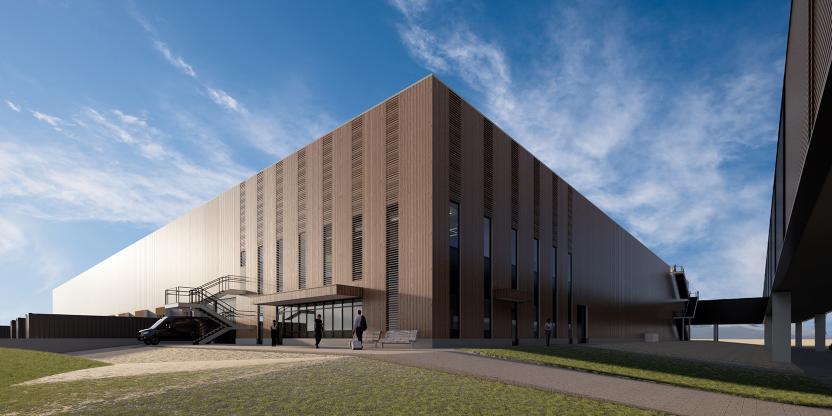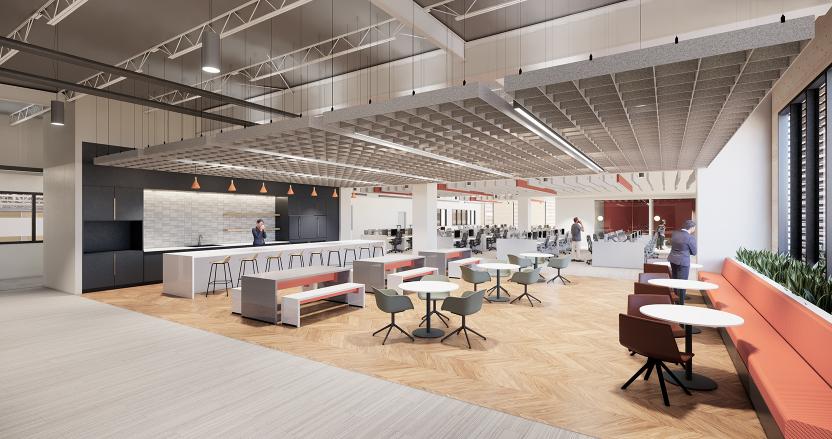Seeking to expand their North American home appliance manufacturing capabilities, Bosch Siemens Home Appliances (BSH) selected HED to lead the master planning and design of a three-phase, 43-hectare campus in Monterrey, Mexico. HED was the natural choice to lead this seven-building, multi-phase development. Phase one includes a 750,000 SF advanced manufacturing facility, offices, quality testing laboratory, logistics warehousing, central utility complex, and two gate houses. HED also conducted planning studies for the future expansion of the campus, including plans for an employee cafeteria with outdoor seating, a kindergarten, chapel, and for future expansion of the manufacturing and office buildings.
HED’s approach aims to disturb as little of the natural environment of the site as possible. To help offset the carbon footprint of the building, the heating systems have been designed to operate without the use of natural gas and the exterior skin of the building is constructed of CLT (cross laminated timber) panels that were sustainably harvested. Solar panels will be installed on the roof to help offset electrical consumption. HED designed a linear butterfly garden and natural pollinator areas that utilize native plants and plants directly from the site which will be irrigated solely by the grey water from the facility. Many of the building material selections have been carefully selected based on their environmental impact such as the use of mineral wool siding, sustainable wood members, locally fabricated steel, and high-performance glazing and finishes.
HED’s approach aims to disturb as little of the natural environment of the site as possible. To help offset the carbon footprint of the building, the heating systems have been designed to operate without the use of natural gas and the exterior skin of the building is constructed of CLT (cross laminated timber) panels that were sustainably harvested. Solar panels will be installed on the roof to help offset electrical consumption. HED designed a linear butterfly garden and natural pollinator areas that utilize native plants and plants directly from the site which will be irrigated solely by the grey water from the facility. Many of the building material selections have been carefully selected based on their environmental impact such as the use of mineral wool siding, sustainable wood members, locally fabricated steel, and high-performance glazing and finishes.





